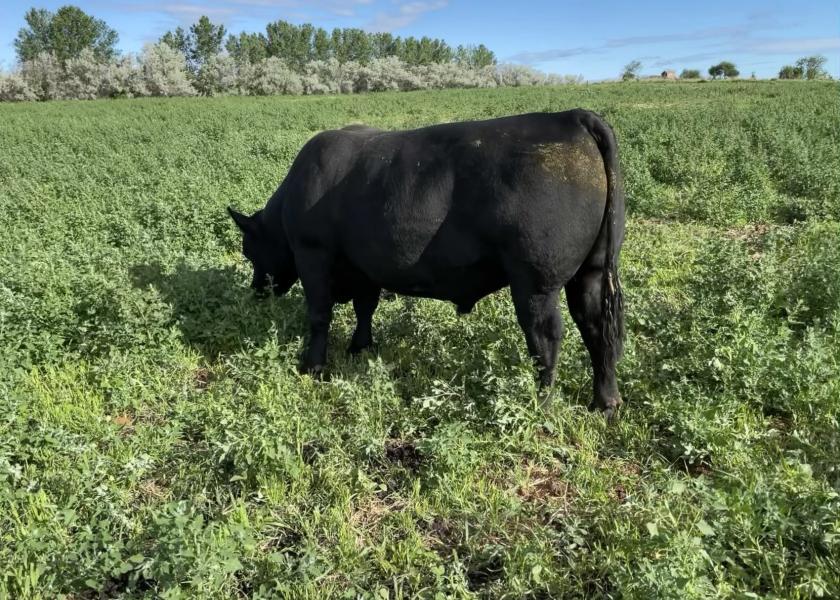Sudden Change in Diet May Cause Bovine Fog Fever

The summer of 2021 has been very challenging for ranchers and livestock. With severe to moderately severe drought in the state, we have experienced the challenges of a reduced amount of forage for grazing and forages harvested for winter feed.
“While the recent rains have improved some pasture and late season grazing conditions, winter feed inventories still remain a challenge for many,” says Zac Carlson, North Dakota State University Extension beef cattle specialist.
“The challenge of reduced winter-feeding inventories can be improved if the fall environment allows for late season grazing of cover crops, cereal crop regrowth or un-grazed lush meadows,” Carlson says.
While viral and bacterial pneumonia in adult cattle are somewhat rare, NDSU Extension veterinarian Gerald Stokka warns that a sudden change in the composition of forage of mature grazing cattle may result in a condition known as “fog fever,” or bovine pulmonary emphysema.
“Animals diagnosed with fog fever have lung damage due to metabolites produced by the rumen micro flora in response to the rapid change in diet from dry, mature grasses and forages to the higher moisture, lush growth found in grasses, alfalfa, some meadow forages and even some species of brassica cover crops,” Stokka says. “The change in diet results in metabolites of the naturally occurring amino acid tryptophan.”
Stokka explains that L-tryptophan is converted to 3-methylindole in the rumen by rumen microorganisms. 3-Methylindole is absorbed into the bloodstream and is the source of the pneumo-toxicity (lung damage) after metabolism.
The level of tryptophan in crops is most likely to be high in lush, rapidly-growing pastures, particularly, but not exclusively, in the fall.
“This type of pneumonia produces lung damage similar to a condition in feedlot cattle called atypical interstitial pneumonia but is distinctly different from bacterial pneumonia,” Stokka says.
The symptoms of this condition are labored, open-mouth breathing, extended head and neck, and frothing at the mouth. Body temperatures will be high normal but may be elevated when environmental temperatures are high.
“Attempting to move cattle will exacerbate the need for oxygen from the damaged lungs and while some cattle will survive, there may be long-term damage,” Carlson says.
According to Carlson, an outbreak typically develops within the first two weeks of changing pastures. Pneumonia of this type does not respond to antibiotic therapy but may benefit from antihistamine and/or anti-inflammatory therapy if instituted early enough. However, Stokka warns that the use of some anti-inflammatories, such as corticosteroids, may induce abortion in pregnant cows.
“Monensin (rumensin) and/or lasalocid (bovatec) has been shown to prevent tryptophan-induced acute bovine pulmonary edema and emphysema,” Stokka says. “According to published research, these ionophores act by reducing the ruminal conversion of L-tryptophan to 3-methylindole.”
“This fall in particular use caution when changing forage diets in cattle,” Carlson advises. “Ensure that cattle are not hungry when changing to new lush regrowth.”
Feeding hay bales prior to turning cattle into new growth or making the transition gradual by limiting the number of hours cattle can graze new, lush forage will decrease the risk of this condition, according to Carlson.
Feeding Rumensin to beef cows at a rate of 200 mg per head per day will lower the risk, but it must be fed several days ahead of turning animals into new forage. Bovatec is not currently labeled for beef cows in a mineral mix but can be provided via lick block to pasture cattle.
Please consult with your veterinarian about all therapy recommendations and when making rapid changes in the diets of pastured cattle.







